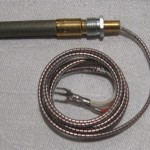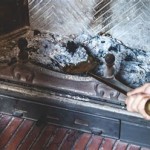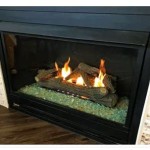DIY Propane Fireplace: A Comprehensive Guide
Creating a personalized outdoor space often involves incorporating elements that foster warmth, ambiance, and a focal point for gatherings. A propane fireplace offers an ideal solution for achieving these goals, providing readily available heat and a visually appealing centerpiece. While professional installation is always an option, constructing a DIY propane fireplace can be a cost-effective and satisfying project for homeowners comfortable with basic construction and gas line safety.
This article provides a comprehensive guide to constructing a DIY propane fireplace, encompassing planning, materials selection, construction steps, safety considerations, and troubleshooting common issues. It assumes a basic understanding of tools, construction techniques, and gas-fitting principles. If unfamiliar with any of these areas, consulting a qualified professional is strongly recommended.
Planning and Design Considerations
The initial phase of any DIY propane fireplace project is thorough planning. This crucial step dictates the overall success and safety of the project. Several key factors warrant careful consideration.
Location: The location of the fireplace is paramount. Consider proximity to structures, prevailing wind direction, and intended use of the surrounding area. Adequate clearance from combustible materials, such as fences, trees, and overhanging structures, is essential to prevent fire hazards. Local building codes often specify minimum clearance distances, which must be strictly adhered to. The location should also facilitate convenient access to a propane supply, either a portable tank or a piped gas line.
Size and Shape: The dimensions of the fireplace should be proportionate to the surrounding area. A small fireplace in a large yard may appear insignificant, while an oversized fireplace can overwhelm a smaller patio. Consider the intended use of the fireplace – will it primarily serve as a source of heat, a decorative element, or a cooking surface? The shape of the fireplace can be customized to complement the existing landscaping and architectural style of the house. Common shapes include rectangular, square, circular, and freeform designs.
Fuel Source: While this article focuses on propane-fueled fireplaces, the specific type of propane connection must be determined. A portable propane tank offers flexibility and portability, but requires periodic refilling. A piped propane line provides a continuous fuel supply, but necessitates professional installation and adherence to stringent gas-fitting regulations. The choice depends on usage frequency, budget, and access to a propane supply line.
Materials: The selection of materials influences the aesthetic appeal, durability, and fire resistance of the fireplace. Common materials include concrete blocks, brick, stone, stucco, and metal framing. Concrete blocks and brick provide excellent fire resistance and structural stability. Stone offers a natural and aesthetically pleasing finish. Stucco can be applied over a concrete block or brick base to create a smooth, textured surface. Metal framing can be used to construct a lighter-weight structure, but requires careful consideration of fireproofing and insulation.
Ventilation: Proper ventilation is crucial for safe operation. An adequately ventilated fireplace allows for the complete combustion of propane, preventing the build-up of carbon monoxide. Ventilation openings should be strategically placed at the base of the fireplace to allow for adequate airflow. Consult local building codes for specific ventilation requirements.
Permits: Before commencing construction, it is essential to obtain all necessary permits from the local building department. Permit requirements vary depending on location and the complexity of the project. Failure to obtain the required permits can result in fines, project delays, and potential safety hazards.
Construction Steps
Once the planning phase is complete, the construction process can begin. The following steps provide a general overview of the construction process, although specific details may vary depending on the design and materials used.
Foundation: A stable foundation is essential for supporting the weight of the fireplace. A concrete slab provides an ideal foundation, ensuring a level and durable surface. The size of the foundation should be slightly larger than the base of the fireplace. The concrete slab should be reinforced with rebar to prevent cracking. Ensure the foundation extends below the frost line in regions with freezing temperatures.
Base Construction: With the foundation in place, construction of the base can begin. If using concrete blocks or brick, mortar should be used to bond the materials together. Stagger the joints between each layer to create a stronger structure. Ensure the base is level and plumb. If using metal framing, weld or bolt the frame together, ensuring it is structurally sound.
Firebox Construction: The firebox is the heart of the fireplace, where the propane burner and flames are located. The firebox should be constructed from fire-resistant materials, such as firebrick or refractory cement. Firebrick is a dense, heat-resistant brick specifically designed for high-temperature applications. Refractory cement is a heat-resistant mortar that can be used to bond firebrick or to create a custom-shaped firebox. The firebox should be large enough to accommodate the propane burner and provide adequate ventilation.
Propane Burner Installation: The propane burner is the component that produces the flames. Choose a burner specifically designed for outdoor fireplaces and ensure it is compatible with the propane supply. Install the burner according to the manufacturer's instructions. Connect the burner to the propane supply line using appropriate fittings and tubing. Ensure all connections are tight and leak-free. It is strongly recommended that a qualified gas fitter perform this step.
Venting (If Applicable): Certain fireplace designs may require venting to exhaust combustion gases. If venting is required, install the vent according to the manufacturer's instructions and local building codes. Ensure the vent is properly sealed to prevent leaks.
Finishing: Once the structural components are complete, the fireplace can be finished with the desired materials. Stone veneer, stucco, or other decorative elements can be applied to the exterior of the fireplace to enhance its aesthetic appeal. Install a fire pit ring or other decorative element around the burner to contain the flames and provide a visually appealing focal point. Consider adding a cap or spark arrestor to the top of the fireplace to prevent embers from escaping.
Safety Considerations
Safety is paramount when working with propane and fire. Adhering to safety guidelines is crucial to prevent accidents and ensure the safe operation of the fireplace.
Gas Leak Detection: Before igniting the fireplace, always check for gas leaks. Apply a soapy water solution to all gas connections. If bubbles form, it indicates a leak. Tighten the connections or replace the fittings as necessary. Never use an open flame to check for gas leaks.
Carbon Monoxide Safety: Propane combustion produces carbon monoxide, a colorless, odorless, and deadly gas. Ensure the fireplace is properly ventilated to prevent the build-up of carbon monoxide. Install a carbon monoxide detector in the vicinity of the fireplace to provide early warning of dangerous levels of carbon monoxide.
Fire Safety: Keep combustible materials away from the fireplace. Never leave the fireplace unattended while it is burning. Have a fire extinguisher readily available in case of an emergency. Supervise children and pets closely when the fireplace is in use.
Code Compliance: Adhere to all local building codes and regulations. Obtain the necessary permits before commencing construction. Ensure the fireplace meets all safety standards.
Professional Inspection: After completing the construction, have the fireplace inspected by a qualified professional gas fitter. A professional inspection can identify any potential safety hazards and ensure the fireplace is operating safely and efficiently.
Troubleshooting Common Issues
Even with careful planning and construction, issues may arise during or after the construction of a DIY propane fireplace. The following sections address some common problems and their potential solutions.
Low Flame: A low flame may indicate insufficient propane pressure. Check the propane tank level and ensure the regulator is functioning properly. If using a piped propane line, contact the gas company to ensure adequate pressure is being supplied.
Uneven Flame: An uneven flame may be caused by a clogged burner. Clean the burner ports with a wire brush or compressed air to remove any debris. Ensure the burner is properly seated and aligned.
Gas Leak: A gas leak is a serious safety hazard. If a gas leak is detected, immediately shut off the propane supply. Do not use any open flames or electrical devices. Ventilate the area and contact a qualified gas fitter to repair the leak.
Pilot Light Issues: If the fireplace has a pilot light, it may fail to ignite or stay lit. Ensure the pilot light orifice is clean and free of debris. Check the thermocouple or thermopile, which may need to be replaced. Refer to the manufacturer's instructions for specific troubleshooting steps.
Soot Buildup: Excessive soot buildup may indicate incomplete combustion. Ensure the fireplace is properly ventilated and the propane burner is functioning correctly. Adjust the air-fuel mixture to achieve optimal combustion.
By carefully planning the project, adhering to safety guidelines, and troubleshooting any issues that may arise, a DIY propane fireplace can be a rewarding and enjoyable addition to any outdoor living space. However, remember that safety should always be the priority. If in doubt, consult a qualified professional.

Diy Outdoor Fire Table Hamilton Park Home

How To Build A Propane Fire Pit Using Gabion Baskets Diy Family Handyman

How Do I Build A Diy Fire Pit For Natural Gas Starfire Direct

Diy Gas Fire Pit Table

Fire Pit Ideas For Every Outdoor Space

Diy Outdoor Fire Table Hamilton Park Home

How To Make An Outdoor Gas Fireplace With Diy Pete

Diy Outdoor Stone Fireplace Jc Huffman

How To Build A Gas Fire Pit Woodlanddirect Com

Wood Burning Iron Chiminea Garden Fireplace Ideas Fire Pits Gas Bottle Burner Welding Projects Pit
Related Posts








